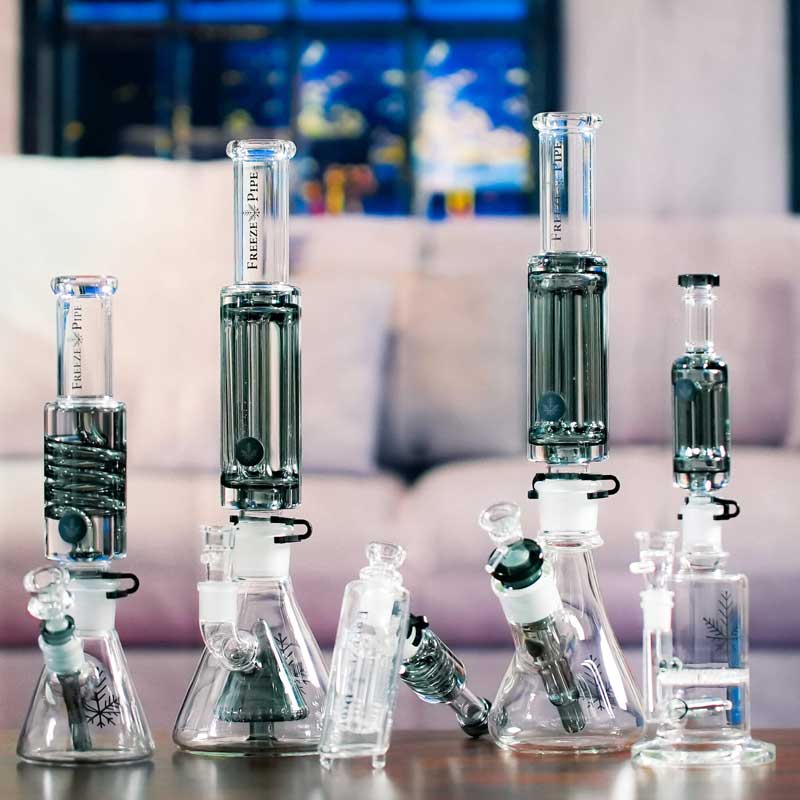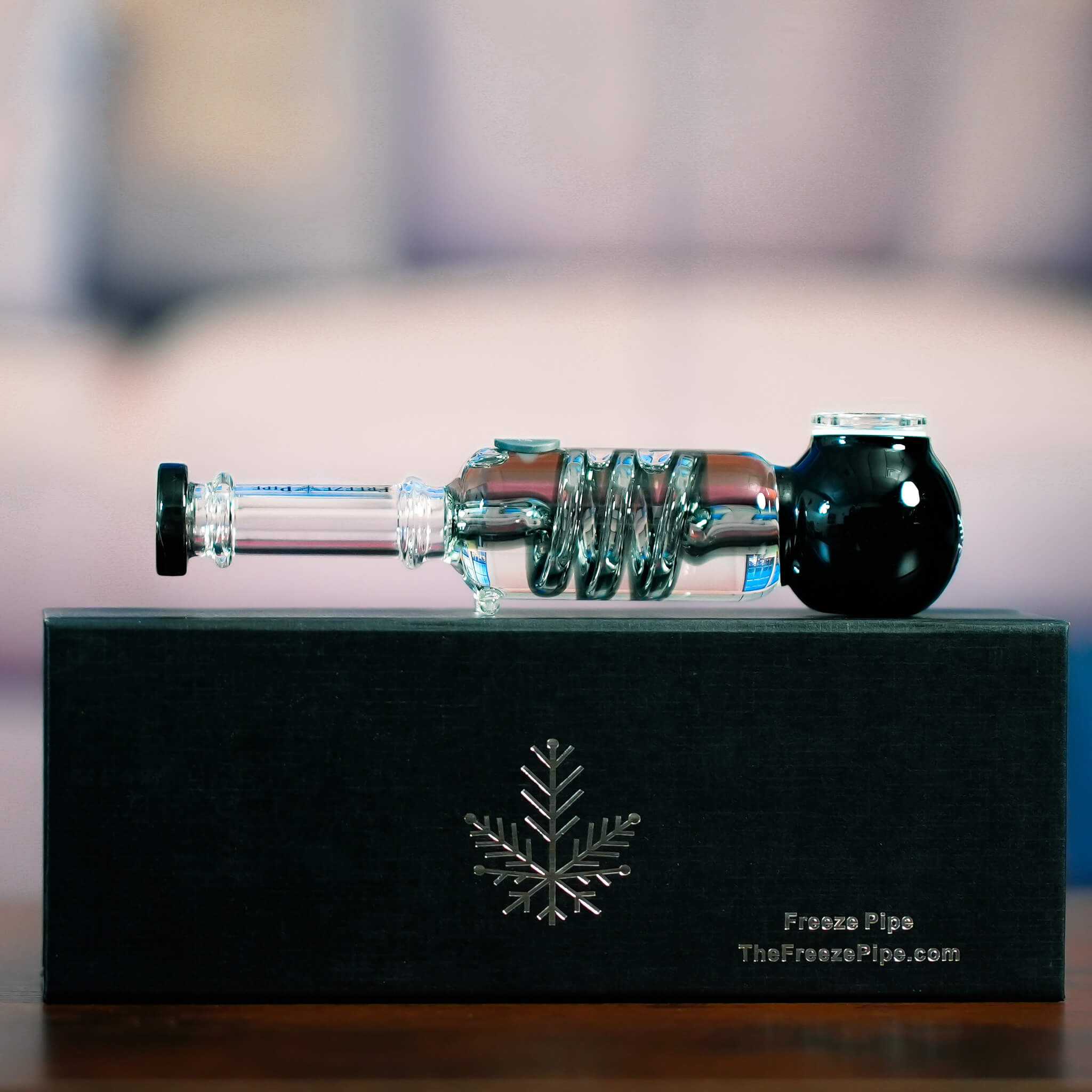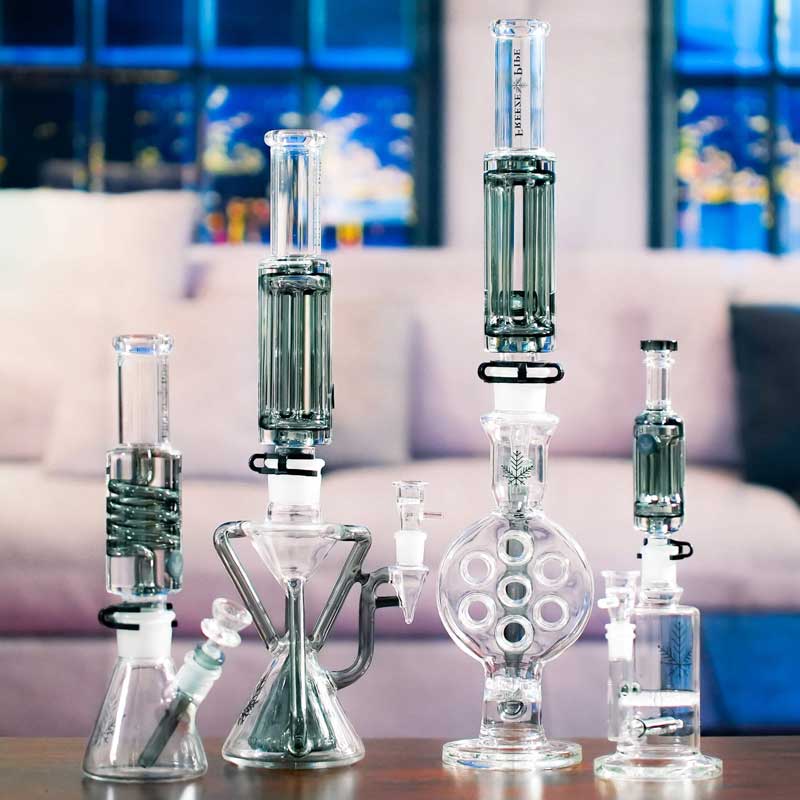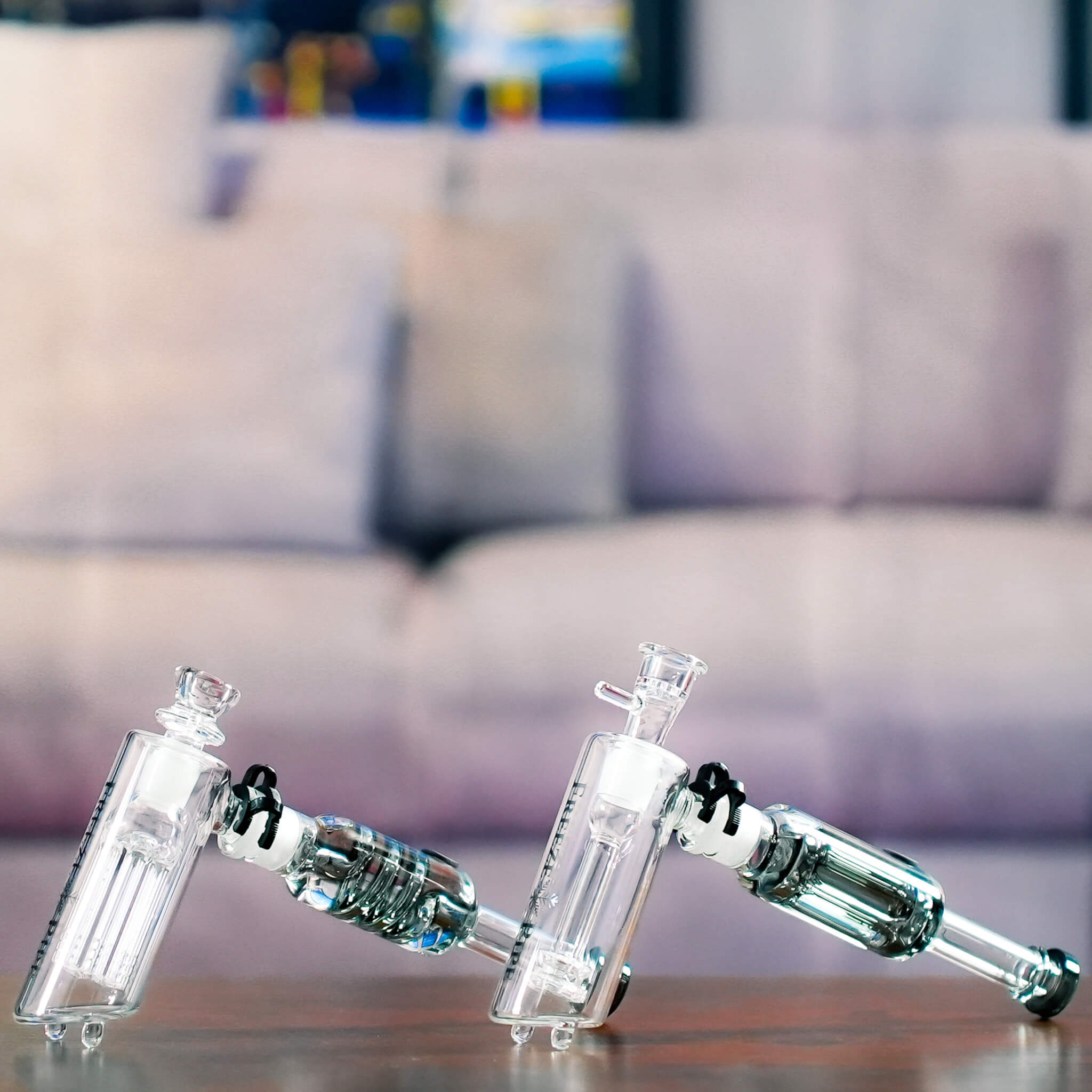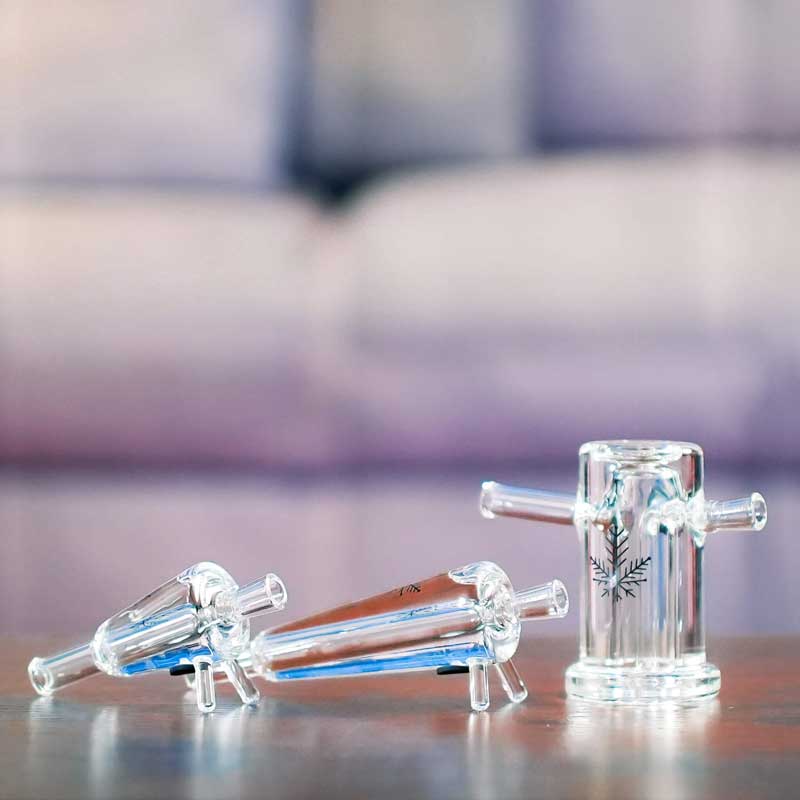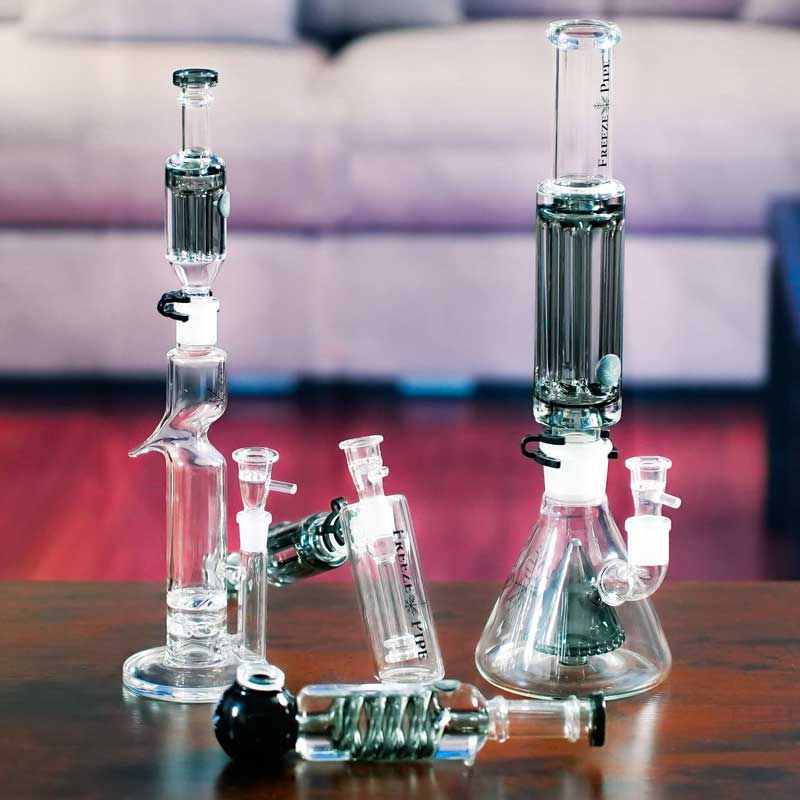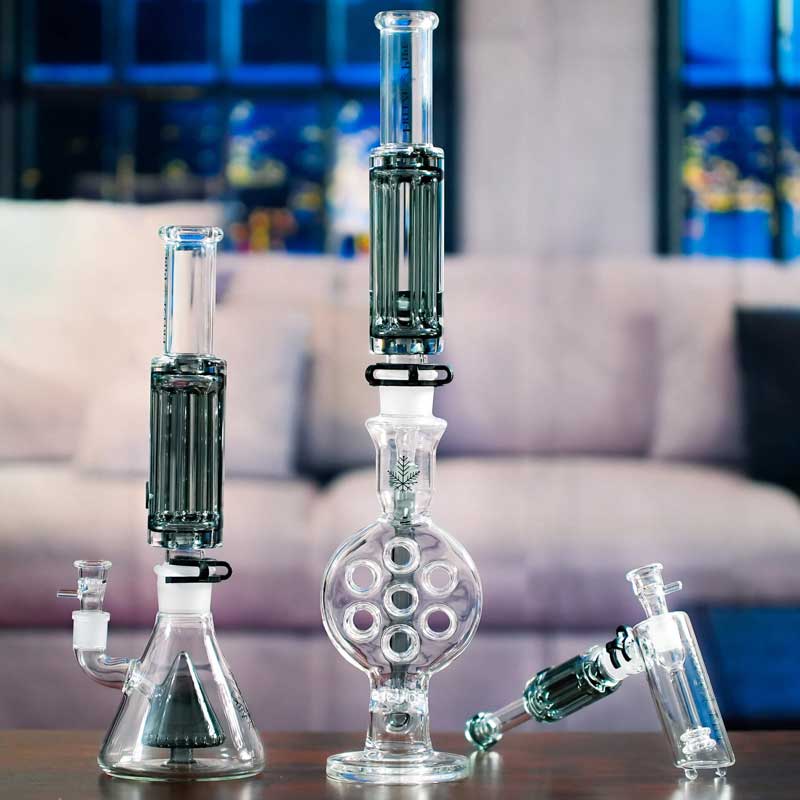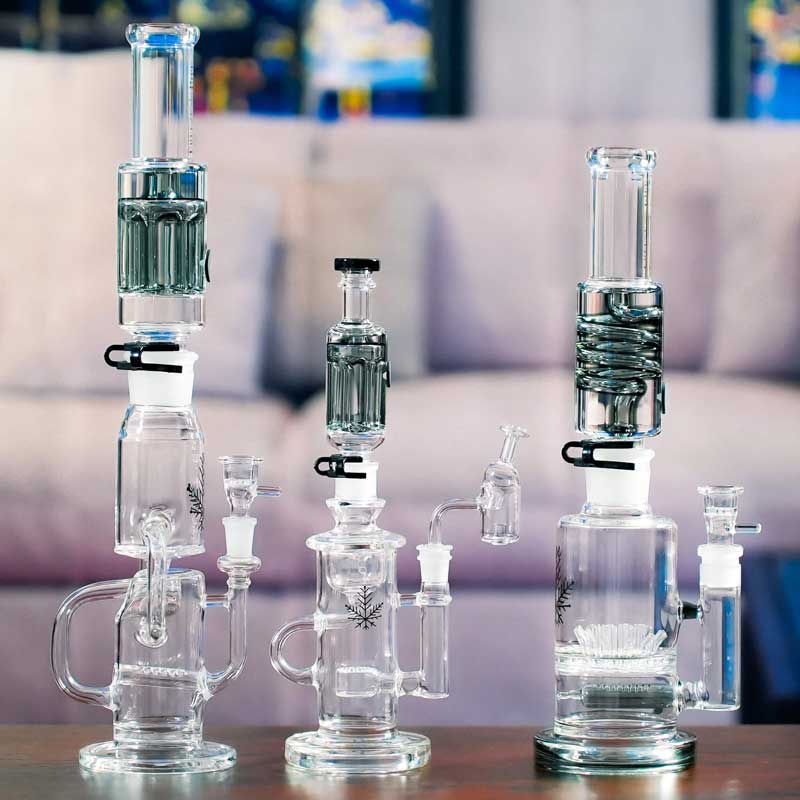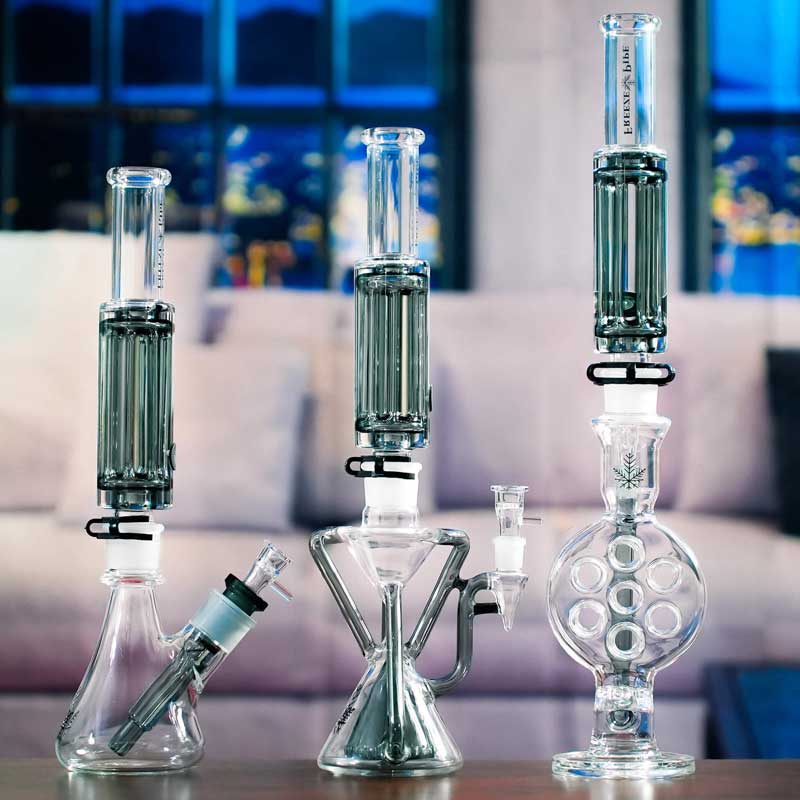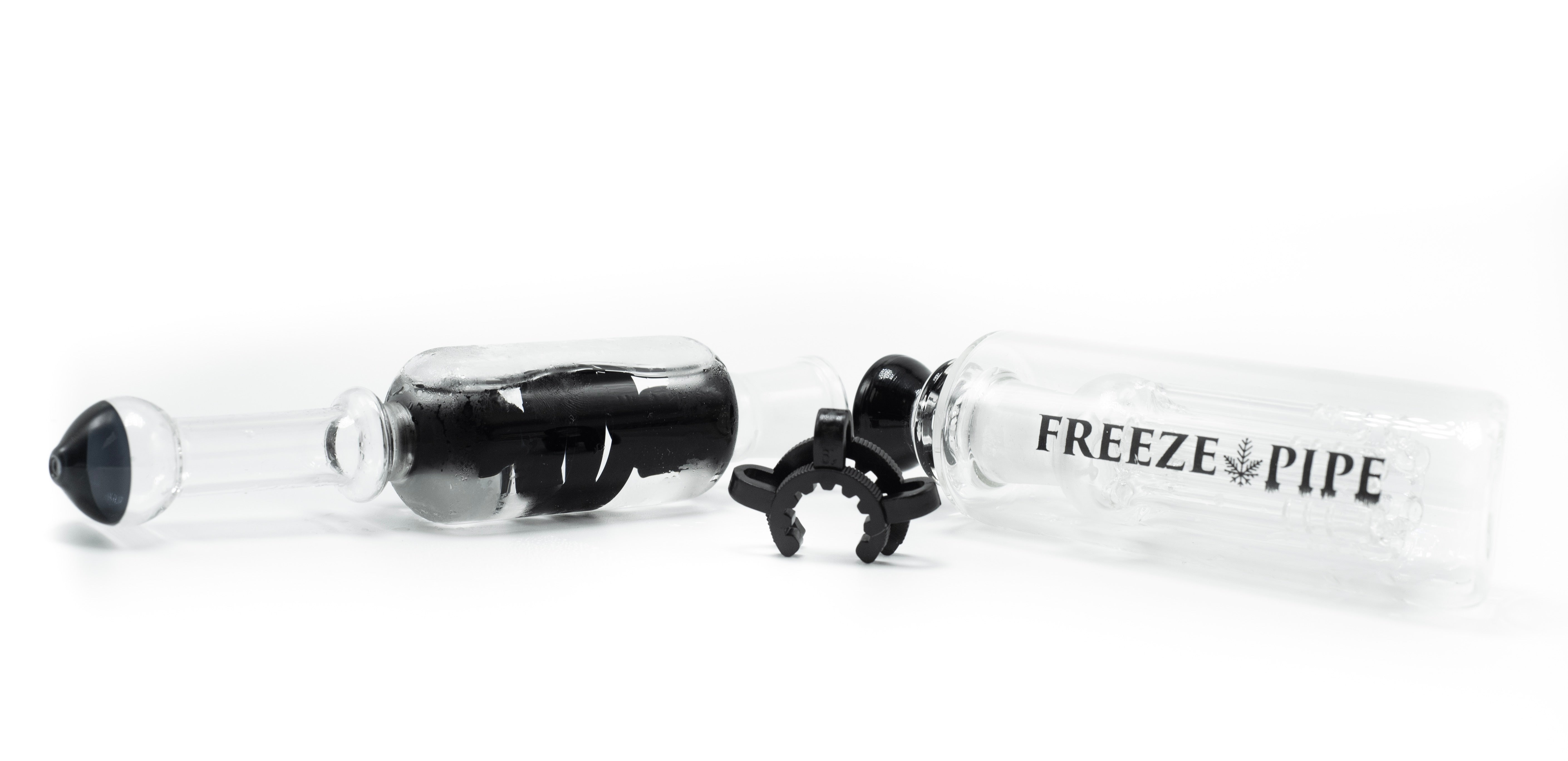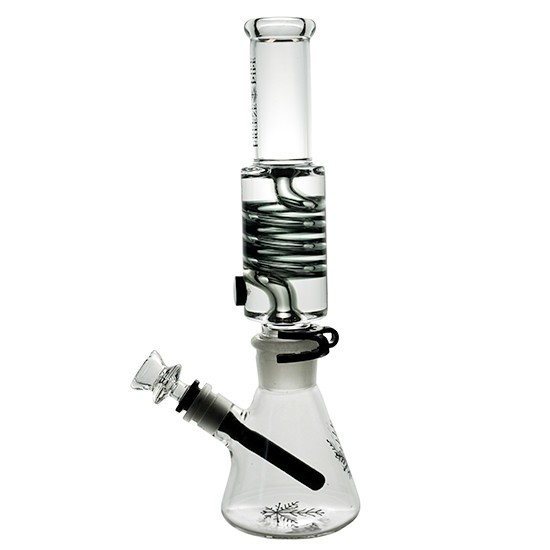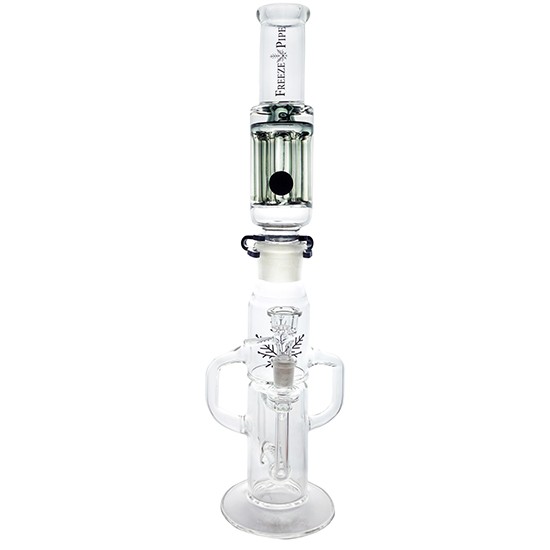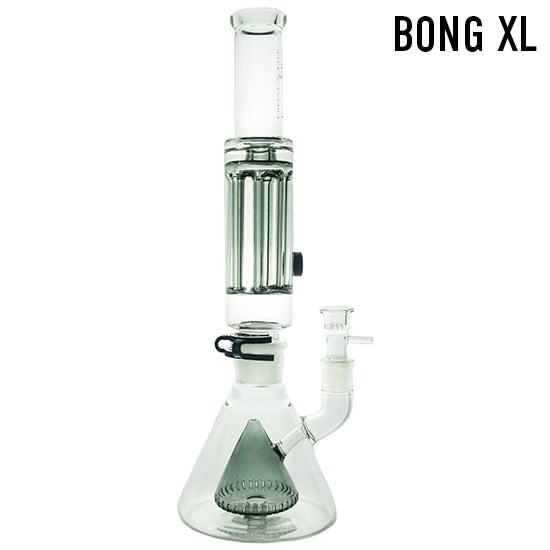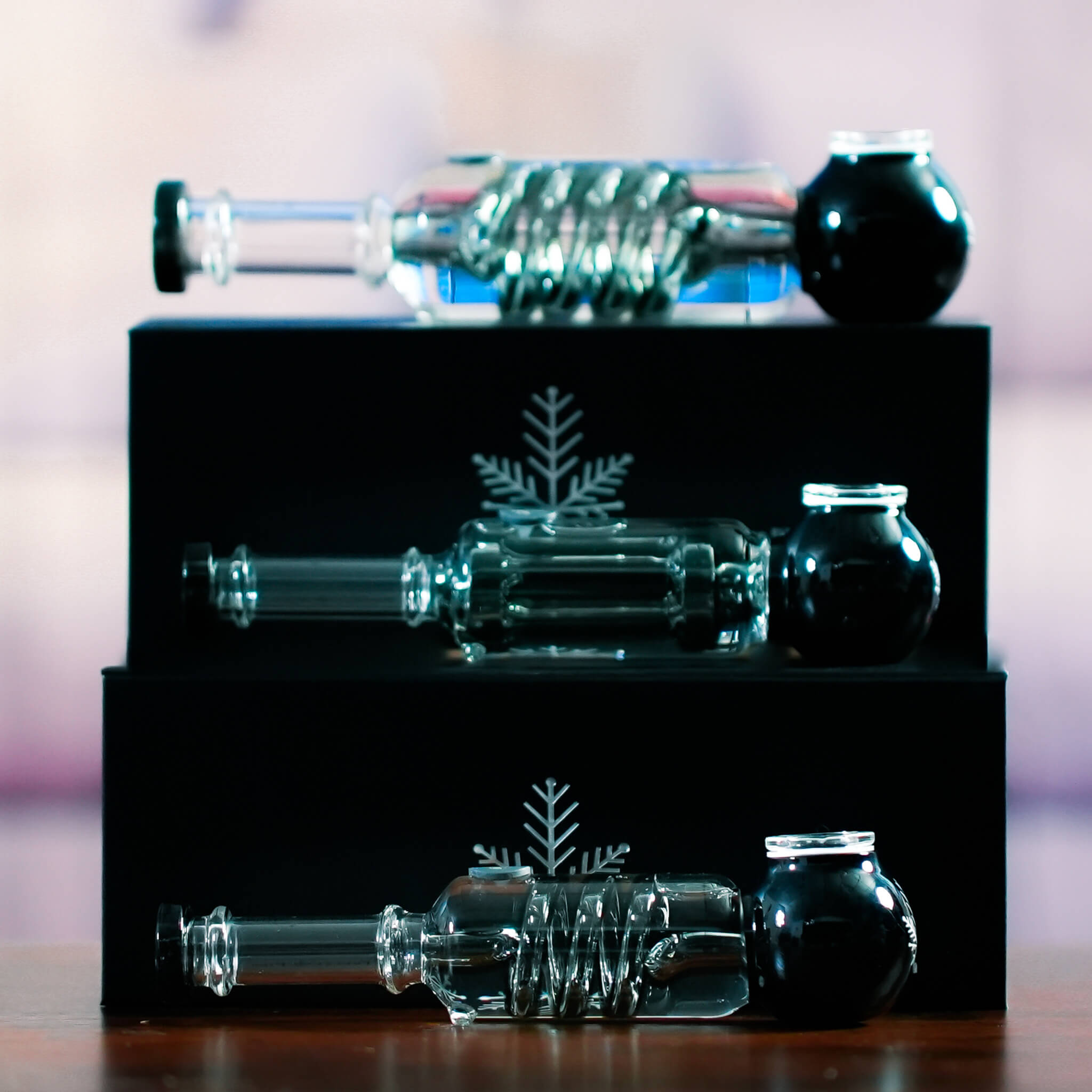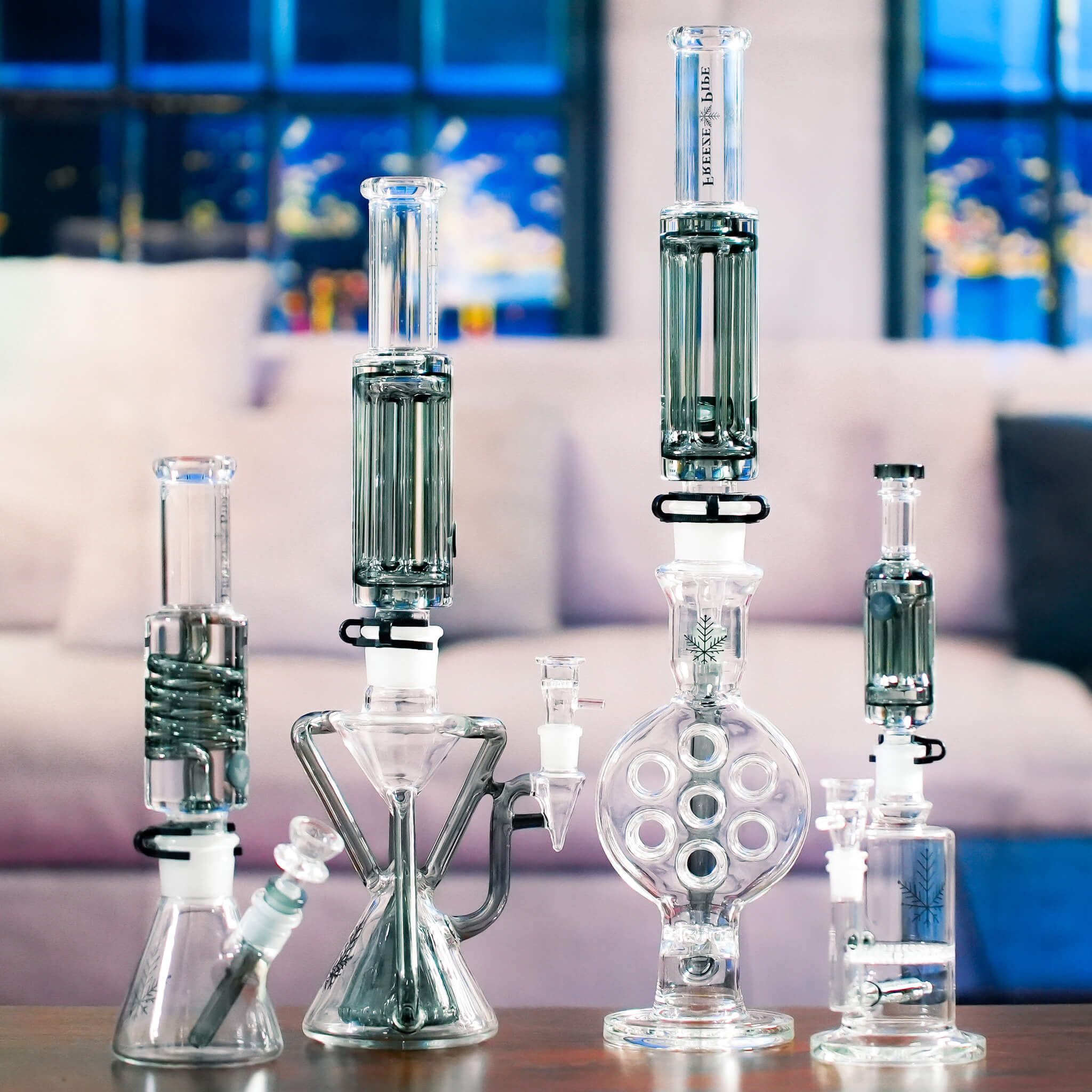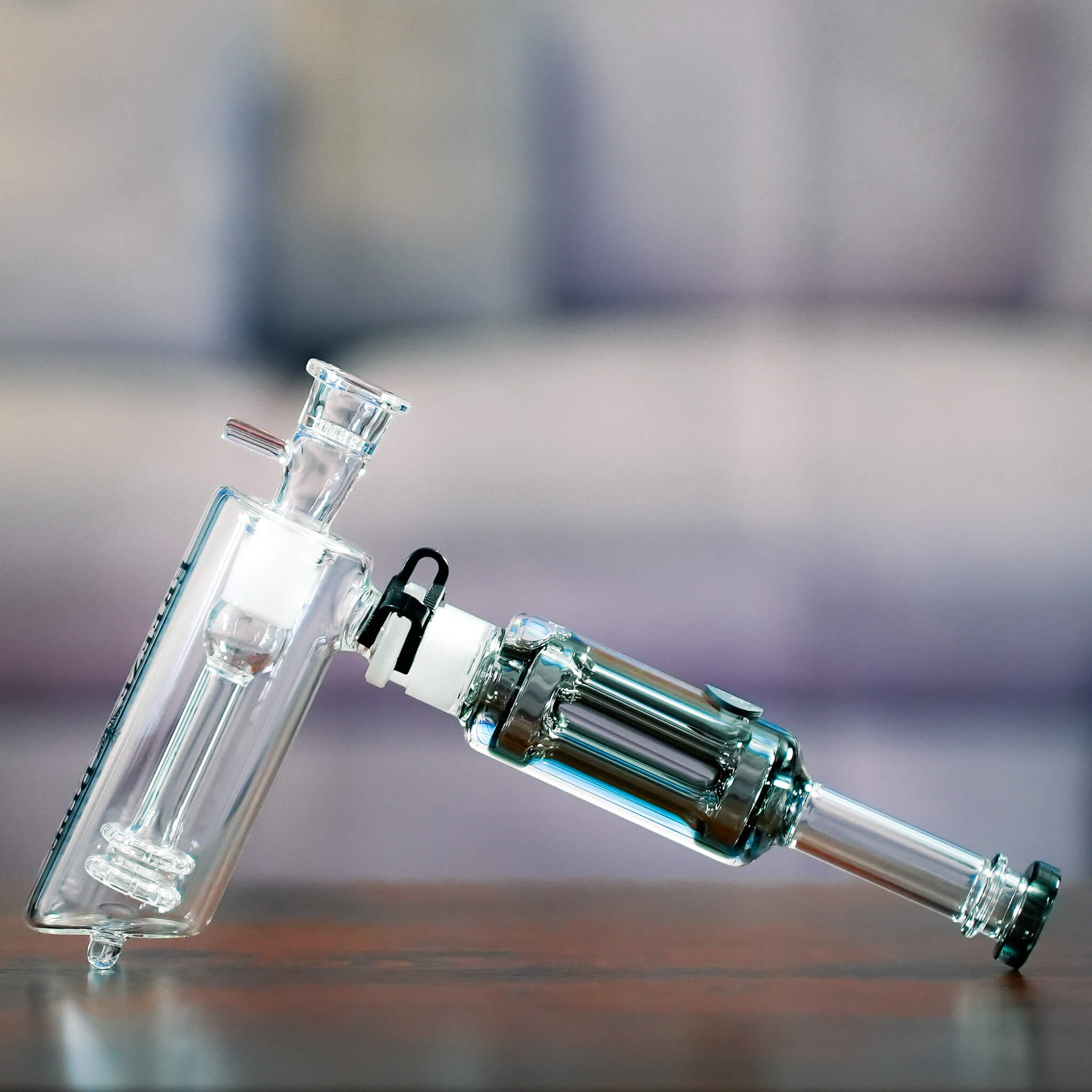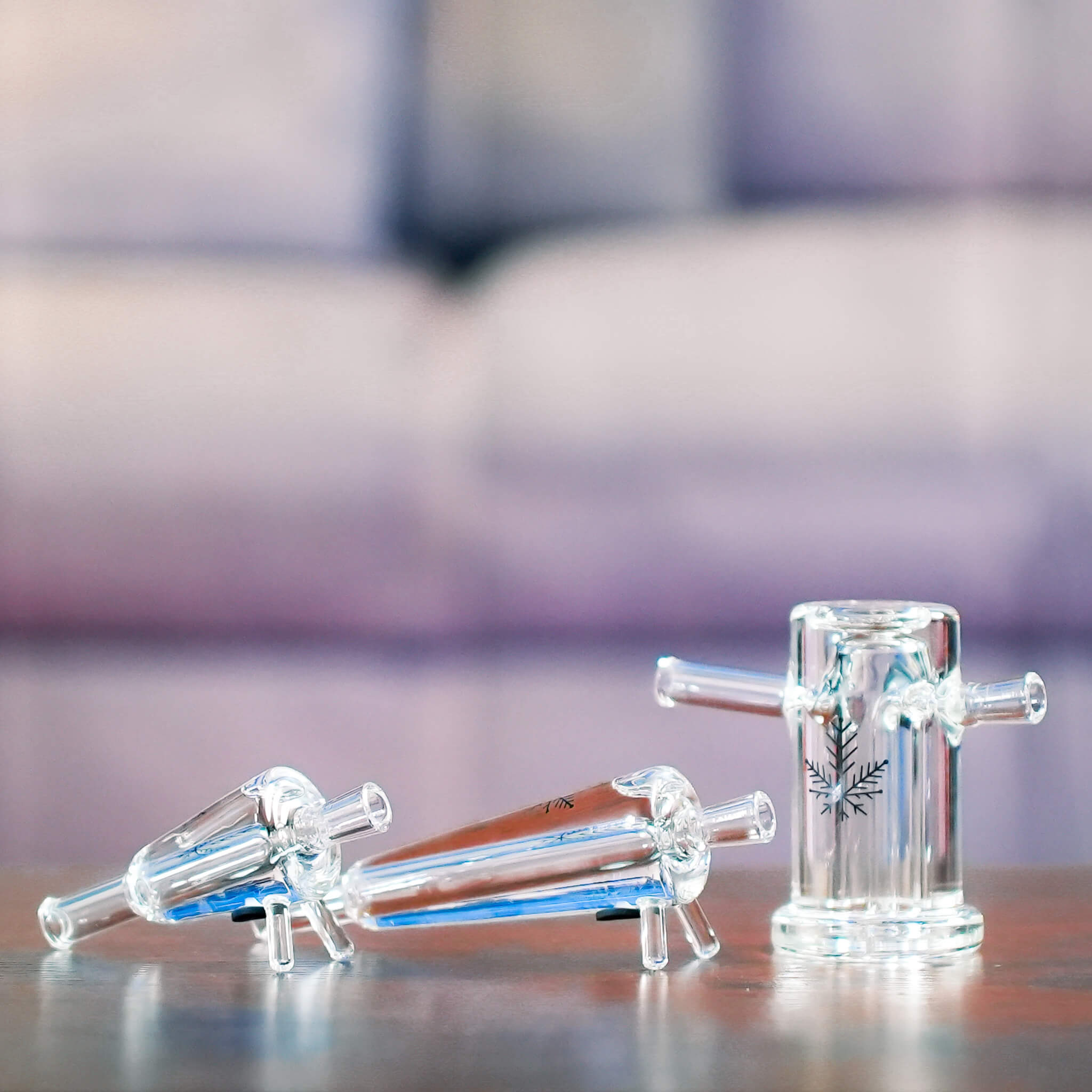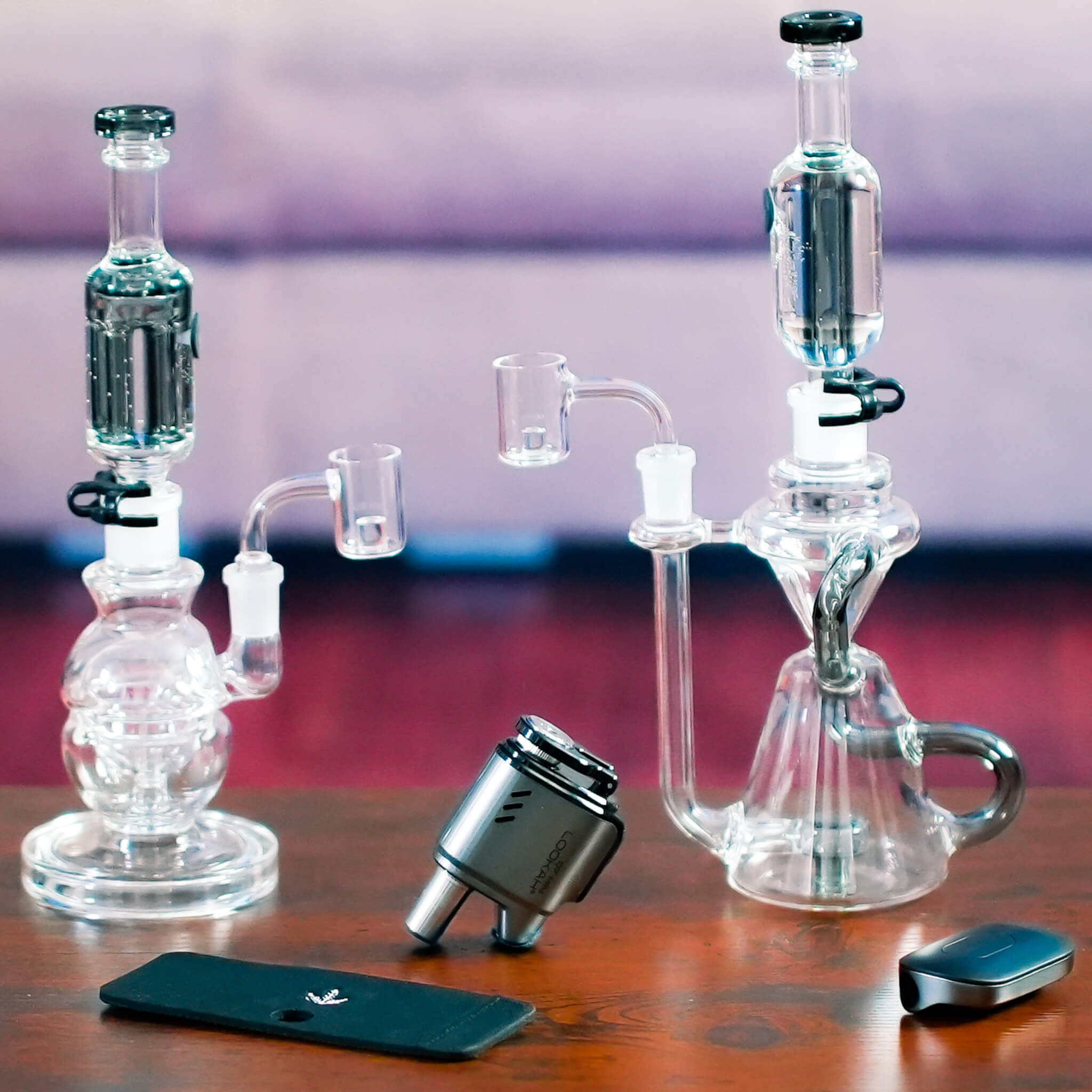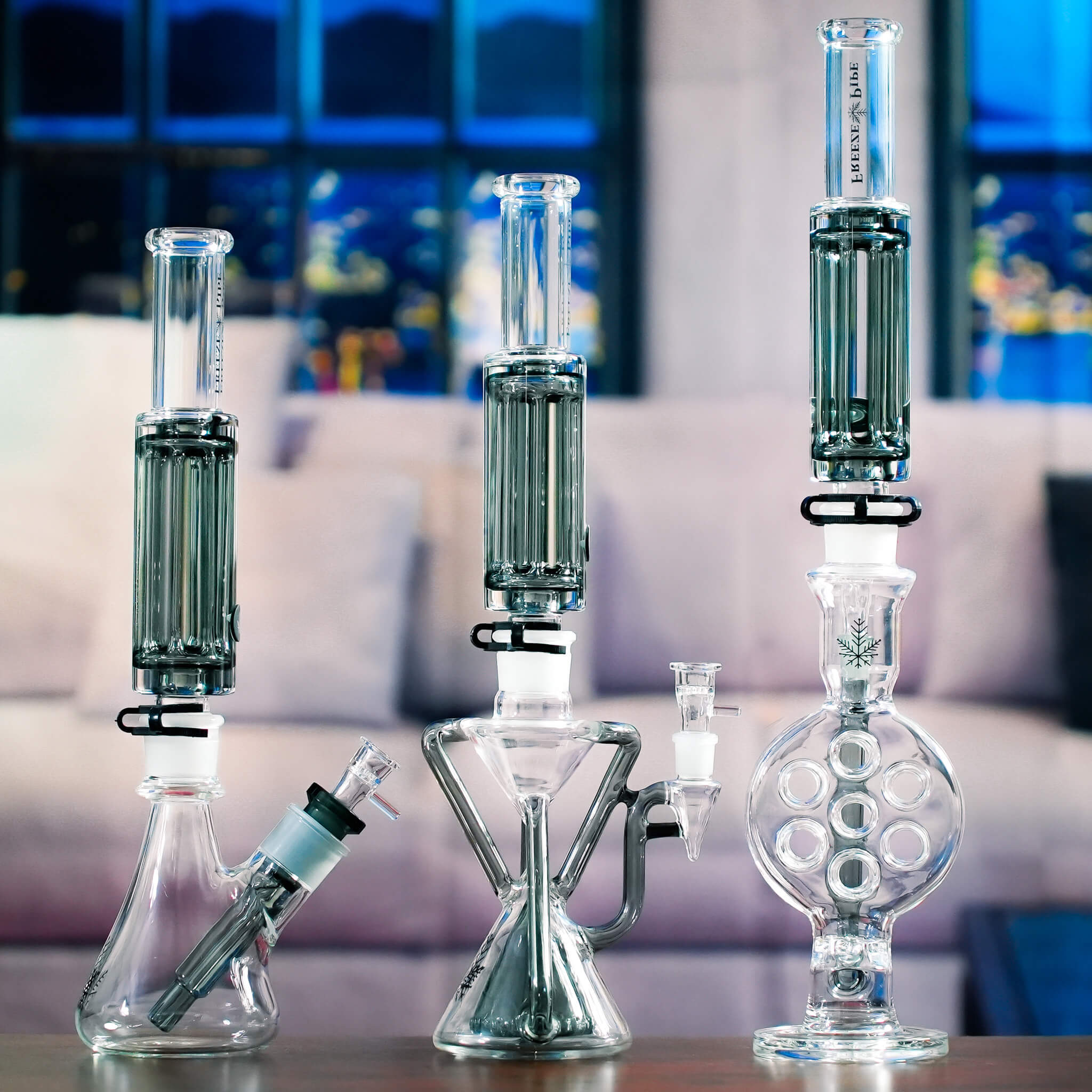Table of Contents:
Generally speaking, these bongs have 6 components to them. These components come in different shapes and styles and each unique mold will alter the performance of your piece. Smoking from a bong is subjective and while there's a natural hierarchy to different designs, what is someone's favorite style of bong might not be another's.
Bowls
This is what holds your herb and where the ignition starts. What's important to know is the size of your bowl. Bowls come in 10mm, 14mm and 18mm sizes, with 14mm and 18mm being the most popular. Generally speaking larger bowls will hold more herb which means less ash and packing for the consumer. Look for a bowl like the honeycomb style which uses a solid piece of glass across the bottom with multiple holes poked in it. This prevents chunks of weed from getting sucked into your piece and clogging percolators, which ruins the piece's function.
Joint

No, not the piece of paper you roll and smoke. A joint in the terms of a bong is the piece of glass that holds the downstem. Downstems are the physical piece that smoke travels through once it leaves the bowl and how it enters the bong. Joints come in 2 different angles, 90 degrees and 45 degrees. The angles are self-explanatory and picture any basic beaker bong, that uses a 45 degree joint. 90 degree joints are used on Freeze Pipe's bongs and don't use a downstem. In that case, smoke would leave the bowl and travel straight down a hollow joint where it takes a hard turn (90 degrees) and enters the bong that way.
Downstem

Downstems are exclusively found on 45 degree joints and are used on just about every beaker bong. When smoke leaves the bowl it travels through the downstem and usually into water where filtration begins. Downstems typically have cross-looking slits cut into the bottom which helps creates bubblers, furthering percolation and a smooth smoking experience. Downstems are easy to use but don't have as good of airflow as stemless 90 degree joints.
Percolators
There's dozens of types of percolators each with their own pros and cons. The job of a percolator is create bubblers / water filtration. Water filtration is important as it cleanses smoke making for a smoother, colder and most importantly healthier smoking experience. Choosing the right perc comes down to a lot of personal preference, but the goal is to find a perc that creates a good amount of filtration while not impeding air flow. Bongs that are too perc heavy can have a immense drag and it'll feel like the piece is clogged. Using a ton of horsepower from your lungs just to smoke herb isn't ideal or necessary. Find a bong with good filtration without being extra. Regarding percolators and material of the piece, there is a difference between silicone and glass and the short version being that glass pieces have better percolators while offering greater filtration.
Base
The base of the bong is the water reservoir. Bong bases usually have a percolator or two inside them or at the very least this is where your downstem ends and throws the smoke into. Bases can come in all shapes and sizes, what you want to look for is one with the percolators you want in it and that won't tip over. Small cylinder bases with tall bongs pose greater risk of tipping over and breaking. Look for wide bases and sturdy looking construction.

